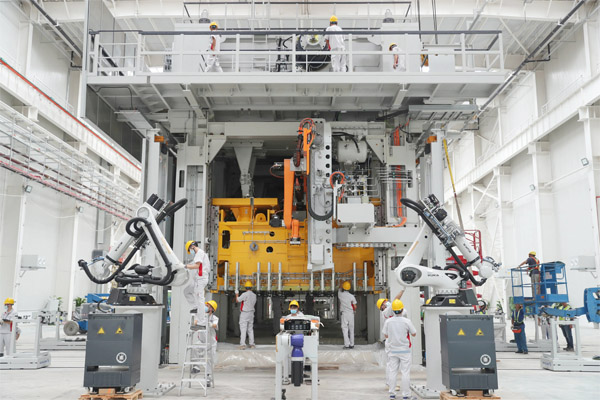 English
English Español
Español  русский
русский  日本語
日本語  Português
Português  Français
Français  Deutsch
Deutsch  tiếng Việt
tiếng Việt  Italiano
Italiano  Nederlands
Nederlands  ภาษาไทย
ภาษาไทย  Polski
Polski  한국어
한국어  Svenska
Svenska  magyar
magyar  Malay
Malay  বাংলা ভাষার
বাংলা ভাষার  Dansk
Dansk  Suomi
Suomi  हिन्दी
हिन्दी  Pilipino
Pilipino  Türkçe
Türkçe  Gaeilge
Gaeilge  العربية
العربية  Indonesia
Indonesia  Norsk
Norsk  تمل
تمل  český
český  ελληνικά
ελληνικά  український
український  Javanese
Javanese  فارسی
فارسی  தமிழ்
தமிழ்  తెలుగు
తెలుగు  नेपाली
नेपाली  Burmese
Burmese  български
български  ລາວ
ລາວ  Latine
Latine  Қазақша
Қазақша  Euskal
Euskal  Azərbaycan
Azərbaycan  Slovenský jazyk
Slovenský jazyk  Македонски
Македонски  Lietuvos
Lietuvos  Eesti Keel
Eesti Keel  Română
Română  Slovenski
Slovenski  मराठी
मराठी  Srpski језик
Srpski језик
Knowledge of BIIR
2022-06-23
With so many advantages, bromobutyl rubber is gradually replacing ordinary butyl rubber in a variety of applications, such as radial tires, bias tires, sidewalls, inner tubes, container liners, pharmaceutical stoppers and machine liners and other industrial products. Bromobutyl rubber is an irreplaceable raw material for the manufacture of tubeless tires and medical products.
1 The production method of bromobutyl rubber
The preparation methods of BIIR include dry mixing bromination method and solution bromination method. The dry mixing bromination method is prepared by thermally mixing N-bromosuccinimide, dibromodimethylhydantoin or activated carbon adsorbed bromine (mass fraction 0.312) with IIR on an open mill. BIIR; solution bromination method is prepared by dissolving IIR in a chlorinated hydrocarbon solvent, and then introducing bromine with a mass fraction of about 0.03. The process is continuous and the product quality is uniform and stable. The optimum mass fraction of bromine in BIIR is 0.017-0.022.
2 Application study of bromobutyl
2.1 Process requirements
There are double bonds in the molecular chain of bromobutyl rubber, and it also contains bromine atoms. Therefore, various methods can be used for vulcanization. The vulcanization system should be selected according to the physical properties required by the rubber products. The mixing, calendering and extruding operation process of bromobutyl rubber is similar to that of ordinary butyl rubber with the same Mooney viscosity, but because bromobutyl rubber vulcanizes quickly and is easy to scorch, the following conditions should be paid attention to:
1. Rubber mixing temperature. If the mixing temperature of bromobutyl rubber exceeds 130°C, there is a danger of scorch, and if the temperature is too high, the rubber compound is easily broken, resulting in poor processing of the rubber compound.
2. Bromobutyl rubber is corrosive to molds, so it should be protected during molding, such as using high-quality molds and protecting them with coatings, avoiding the use of water-based mold release agents and maintaining high temperatures to avoid repeated fluctuations in mold temperature Wait.
2.2 Combination and blending system
2.2.1 IIR/BIIR
The use of BIIR/IIR in combination can improve the processing performance and physical properties of IIR, and at the same time, it can shorten the curing time of IIR, and the interfacial adhesion of the adhesive is large, and the viscosity of the rubber compound is reduced, and the processing performance is improved. In addition, adding ordinary butyl rubber to bromobutyl rubber is also an important way to reduce production costs.
The combination of ordinary butyl rubber and bromobutyl rubber can improve the self-adhesion of the rubber compound, and the process performance is good; with the increase of the amount of bromobutyl rubber in the combined rubber, the vulcanization speed is obviously accelerated, and the UV absorbance of the combined rubber and the easily oxidized The two indicators will be gradually improved; the change of bromobutyl content in the combined rubber has no great influence on the physical and mechanical properties and aging properties of the combined rubber; the vulcanization system of the combined rubber of ordinary butyl rubber and bromobutyl rubber is adopted. Sulfur vulcanization or morpholine vulcanization works well.
2.2.2 NR/BIIR combined system
Bromobutyl rubber can be used in combination with natural rubber in any proportion. Bromobutyl rubber and natural rubber are used together, and the vulcanization speed is fast, which can improve the air tightness of natural rubber, and improve its heat resistance, weather resistance and resistance to various chemicals. Natural rubber, on the other hand, can improve the adhesive properties of bromobutyl rubber-based compounds.
The largest amount of bromobutyl rubber in tire production is used in the innerliner formulation of tubeless tires. Some studies have compared bromobutyl rubber inner liner and bromobutyl rubber/natural rubber combined inner liner compound, the results show that the purpose of combining BIIR and NR is to improve the adhesion of the compound itself and improve the Its physical properties, shorten its curing time. It is also pointed out in the literature that another reason for blending BIIR with NR rather than 100% using BIIR for the formulation of the inner liner is from the perspective of production cost and production process control. However, it should be noted that since the blending of BIIR and NR itself is difficult to achieve a homogeneous phase in actual use, it will adversely affect the performance of the rubber compound. Oil-free low Mooney viscosity, easy-to-process 100% BIIR to ensure minimum air and water permeability. At present, the use of BIIR in the formulation of the inner liner varies with different tire products. The products of well-known brands will use 100% BIIR or CIIR; all-steel heavy duty tubeless radial tires and high-speed passenger tires (such as V 100% BIIR or CIIR. For all-steel load-carrying radial tires with inner tubes and passenger tires with lower speed grades (such as S-grade, T-grade), BIIR rubber is mixed with NR.
2.2.3 EPDM/BIIR combined system
The combination of bromobutyl rubber and EPDM rubber can change the vulcanization speed (as the content of bromobutyl rubber in the combined rubber increases, the vulcanization speed drops sharply until the content of bromobutyl rubber reaches 50%) , followed by the opposite trend), improving the adhesion, air tightness and damping properties of compounds based on this, conversely, EPDM rubber can improve the low temperature brittleness of compounds based on bromobutyl rubber , ozone resistance and heat resistance.
2.2.4 BIIR/CR combined system
The purpose of using bromobutyl rubber together with neoprene is mainly to reduce the cost of bromobutyl rubber-based rubber. Bromobutyl, like G- and W-type neoprene, can be vulcanized with zinc oxide or sulfur. The combination of bromobutyl rubber and neoprene rubber has good heat resistance and ozone resistance, and the compression set resistance and weathering resistance are the same as those of neoprene.
2.2.5 BIIR/NBR combined system
The use of nitrile rubber in bromobutyl rubber can improve the oil resistance and chemical resistance of the rubber compound, and improve the compression set performance of the product, but the physical and mechanical properties are poor. When used in combination with nitrile rubber, bromobutyl rubber can also improve the low temperature flexibility, ozone resistance, ester resistance and ketone resistance of nitrile rubber, but the oil resistance and tensile strength are reduced.
2.2.6 BR/BIIR combined system
The purpose of using cis-butadiene rubber and bromobutyl rubber together is to use the good wet traction of bromobutyl rubber and the good wear resistance and low rolling resistance of cis-butadiene rubber to complement each other and learn from each other. BR/BIIR blends are used in tread compounds and are reinforced with silica because the tread compounds containing bromobutyl rubber have good wet traction but poor abrasion resistance, due to First, the interaction between butyl rubber and carbon black is poor, and the coupling of rubber and silica through silane can greatly improve the interaction between butyl rubber and filler, and obtain a good reinforcement effect. The addition of silica-reinforced bromobutyl rubber to the butadiene rubber tread compound significantly improves the three major properties of the tread compound: wear resistance, traction and rolling resistance.
2.3 Recycling of bromobutyl rubber
Bromobutyl rubber has a good recycling function, which is also a major advantage of bromobutyl rubber different from other rubbers. The regeneration process of bromobutyl rubber is very simple. It does not need to go through complicated processes such as high temperature desulfurization. It can be used as long as it undergoes certain mastication, and it is well mixed with the original rubber of bromobutyl rubber. The bromobutyl compound added with reclaimed rubber will gradually decrease its tensile strength and increase its elongation with the increase of the amount of reclaimed rubber, but this change is not obvious, especially the amount of reclaimed rubber added. Within 15%, the properties of bromobutyl rubber are well maintained, and the reclaimed rubber does not have much effect on the aging properties of bromobutyl. In addition, the combination of reclaimed rubber and original rubber basically does not affect the chemical properties of the product.
2.4 The cross-linking process and mechanism of BIIR
Scott PJ et al. studied the thermal stability of BIIR and small molecule model (BPMN), and found that the generalized analysis of BPMN small molecule model is very close to the actual behavior of BIIR, and can be applied to the study of BIIR vulcanization mechanism. BIIR will undergo isomerization when it is at the sulfurization temperature. The generation of isomerization depends to a large extent on the concentration of hydrogen bromide in the system. When hydrogen bromide is removed from BIIR, conjugated dienes will be formed in the BIIR molecular chain. structure, and is accompanied by isomerization.

-
E-mail
-
Call Us
-
Address
No.17, Huli Park, Tongan Industrial Concentration Area, Xiamen 361100 China
For inquiries about stabilizer bushing, dust cover, horse rubber parts or price list, please leave your email to us and we will be in touch within 24 hours.




